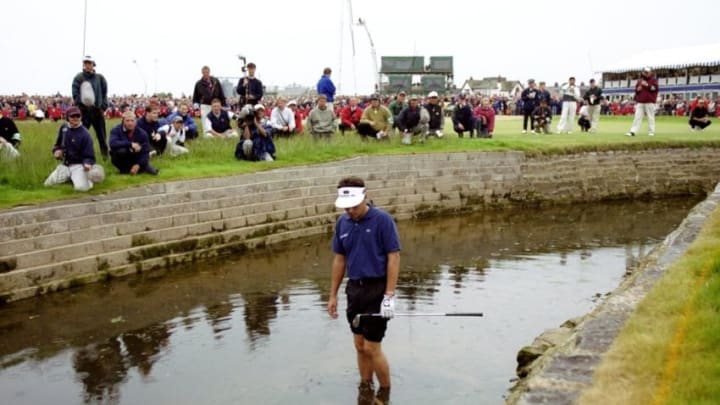Shane Lowry begins the final round of the British Open on Sunday with a big, but not insurmountable, advantage.
Shane Lowry will carry a four-stroke lead into Sunday’s final round of the British Open. That sounds like a huge advantage. Historically, however, it is less than a sure thing.
Indeed while the record suggests that Lowry is a good bet to walk off with the Claret Jug on Sunday evening, it is also likely that his margin tightens toward the finish.
Over the course of the past half century, ten competitors have carried leads of at least four strokes into the final round of play at the Brit. Their average lead, for the record, was 4.9 strokes. Eight of those 10 did go on to win, but their average victory margin shrank from 4.9 to 4.1 strokes.
Three had to hold off charges that brought challengers within one or two strokes by the finish. Two others did lose…in both cases memorably.
The first of those two was Jean Van de Velde, the cursed Frenchman who carried a five-stroke lead into the final round of the 1999 British Open at Carnoustie. Van de Velde, of course, butchered the finish, fell into a three-way playoff and eventually watched unheralded Scotsman Paul Lawrie come from 10 strokes off the pace to win.
Then at Royal Lytham and St. Anne’s in 2012, Australian Adam Scott dominated the tournament’s first three rounds. His 199 led Graeme McDowell and Brandt Snedeker by four strokes, with Tiger Woods one more shot back.
More from British Open News
- Max Homa Reaches Turning Point in Majors
- 2023 Open Championship: The Real Winners And Losers At Hoylake
- Assessing Brian Harman’s Open Championship victory
- ‘You Don’t Have The Stones For This’ – Harman Motivated By Hecklers
- Watch Brian Harman Receive The Claret Jug at Royal Liverpool
On Sunday, however, Scott stumbled to a 75 – seven strokes worse than his previous high for the tournament. In the meantime, veteran Ernie Els shot 68 to pass Woods, Snedeker, McDowell and Scott. His one-shot victory was clinched when Scott bogeyed the final hole.
Aside from those two stunners, third-round leaders with big leads have managed to hold on, although not always without some element of suspense. At Muirfield in 1992, Nick Faldo shot 199 to lead Steve Pate and John Cook by four entering the final round. But Cook closed with a 70, making Faldo’s final 73 just good enough to carry away the first prize.
As recently as 2014, Rory McIlroy carried a six-stroke lead over Rickie Fowler into the final round at Royal Liverpool. Then Fowler made a late rush birdying three of the final four holes, eventually losing by just two.
In 1996, Tom Lehman by six strokes entering the final round and posted a closing 73. That left him two ahead of Mark McCumber and Ernie Els.
Occasionally of course, a big lead does prove insurmountable. In 1980, Tom Watson built a four-stroke lead and held it through the final day. One year later, Phil Rogers assumed a five-stroke advantage through three rounds and won by four.
In 1990, Faldo made his five-stroke lead through three rounds stand up at the finish. At St. Andrews in 2000, Tiger Woods famously built a six-stroke lead after three rounds and then hit the accelerator, winning by eight.
Louie Oosthuizen did the same thing at the same course in 2010, carrying a four-stroke lead into Sunday and winning by seven.
Will Shane Lowry be able to maintain his edge through the winds and rain that are likely to return to Royal Portrush in Sunday’s final round? Only time will tell, but both he and those in pursuit have plenty to hold onto as play begins.
